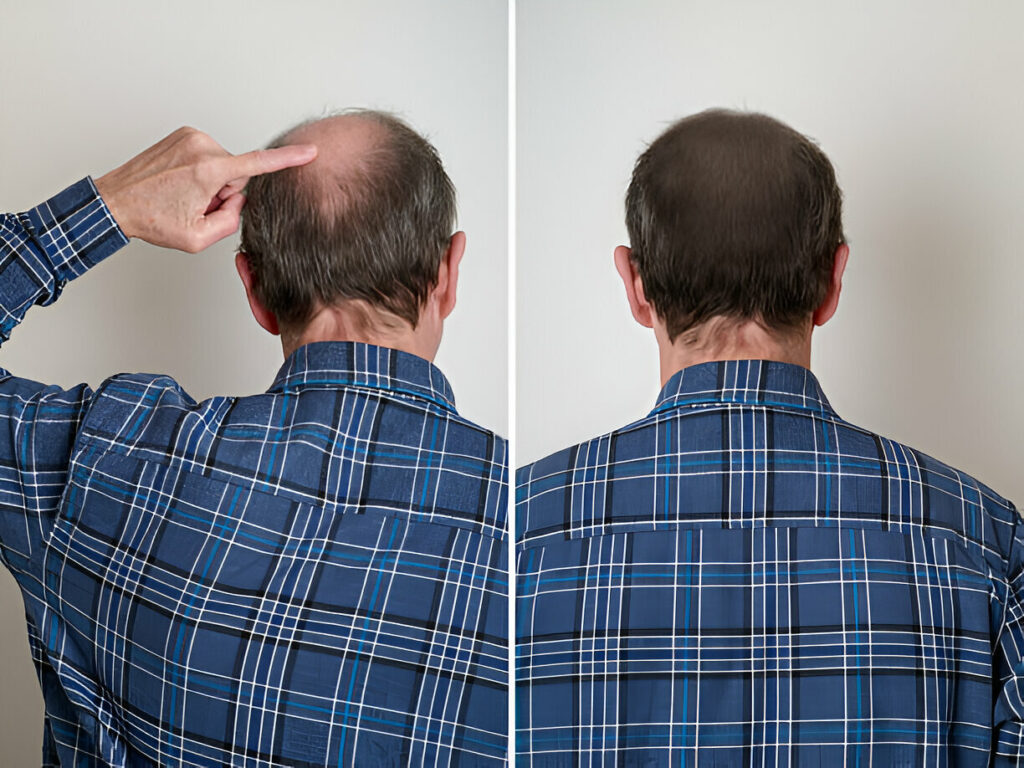Table of Contents
Table of Contents
The permanence of SMP depends on several factors, including the type of pigment used, the technique adopted by the practitioner, and how well the scalp is cared for afterward. Generally speaking, most patients can expect their results to last on average, 4–6 years before they begin to fade. However, some people have reported that SMP lasted up to nine years or more with proper care and maintenance.
The type of pigment used also plays a role in determining how long SMP will last. The most common pigments used are iron oxide-based ones, which tend to last longer than other types such as vegetable dyes and carbon-based ones. Iron oxides also offer greater colour retention in sunlight compared to other pigments.
It’s important for any potential patient considering SMP to have realistic expectations about the procedure’s longevity. While SMP does provide a more permanent solution than other hair loss treatments like wigs or toupees, it isn’t permanent in the sense that you may never need another treatment again. It requires regular touch-ups every couple of years if you want your results to continue looking fresh and natural over time.

In addition to choosing an experienced practitioner and carefully researching any products or tools they plan on using during treatment, there are some proactive steps patients can take to help prolong their results from SMP: protecting their scalp from physical trauma (such as friction or UV exposure), keeping their head clean with gentle shampoos and avoiding harsh chemicals when washing their hair, and being mindful not to pick scabs or irritate the skin during recovery (even if itching is present). By following these tips along with regularly scheduled touch-up appointments, patients can extend the life of their Scalp Micropigmentation results significantly over time.
Let’s dive deeper into what influences the longevity of SMP, how you can extend the results, and why this solution is a smart investment for long-term confidence.
How Long Does Scalp Micropigmentation Last?
On average, scalp micropigmentation lasts 4–6 years before any noticeable fading occurs. The pigments used in SMP are designed to break down very slowly over time. However, even after fading, the base layer of pigment remains intact for many years.
Key Factors That Affect Longevity:
- Skin Type:
Oily skin tends to break down pigments more quickly, possibly reducing SMP longevity by a year or more. - Sun Exposure:
UV rays are the leading cause of premature pigment fading. Clients who regularly wear hats or sunscreen maintain their SMP results longer. - Immune Response:
Some individuals’ immune systems metabolize the pigment faster than others, affecting how long the results last. - Aftercare Routine:
Proper aftercare like avoiding excessive sweating, sunbathing, and harsh shampoos can greatly impact the lifespan of your SMP. - Quality of the Technician:
A highly skilled SMP technician uses top-grade pigments and advanced techniques, which lead to longer-lasting, natural-looking results.
SMP Touch-Up Timeline
Although your scalp micropigmentation can last several years, touch-ups may be required to revitalize colour and definition.
- Touch-Up Every 3–6 Years:
A light refresh session helps maintain vibrancy, especially in high-fade areas like the hairline or crown.
- Minor Touch-Ups Within First Year (If Needed):
Some clients may return within the first 12 months for small corrections or enhancements based on healing and pigment absorption.
- Annual Touch-Ups (Optional):
For perfectionists or those exposed to frequent sun, annual SMP maintenance may be preferred.
How to Make SMP Last Longer: Expert Tips
Want to make sure your scalp micropigmentation stays fresh for as long as possible? Here’s how to do it:
1. Avoid Direct Sunlight
Use SPF 30+ sunscreen or wear a hat when outdoors. UV rays are the #1 cause of pigment fading.
2. Stick to Gentle Products
Use sulphate-free shampoos and avoid exfoliating products on the scalp.
3. Follow Aftercare Instructions Closely
Avoid sweating, swimming, or using harsh chemicals during the healing period after each session.
4. Stay Hydrated and Healthy
A balanced diet and healthy immune system help retain pigment integrity.
Why SMP Is Worth the Long-Term Investment
You may be wondering: is it really worth it? Considering the duration and ease of maintenance, the answer is a resounding yes.
- Long-Lasting Confidence
Unlike temporary hair fibres or wigs, SMP provides a reliable, long-term solution to hair loss.
- No Daily Maintenance
There’s no need for daily styling, sprays, or concealment products.
- Cost-Effective
One initial investment lasts years—saving thousands on temporary hair treatments over time.
- Natural Appearance
SMP creates a flawlessly realistic hairline, customized to match your skin tone and facial structure.

